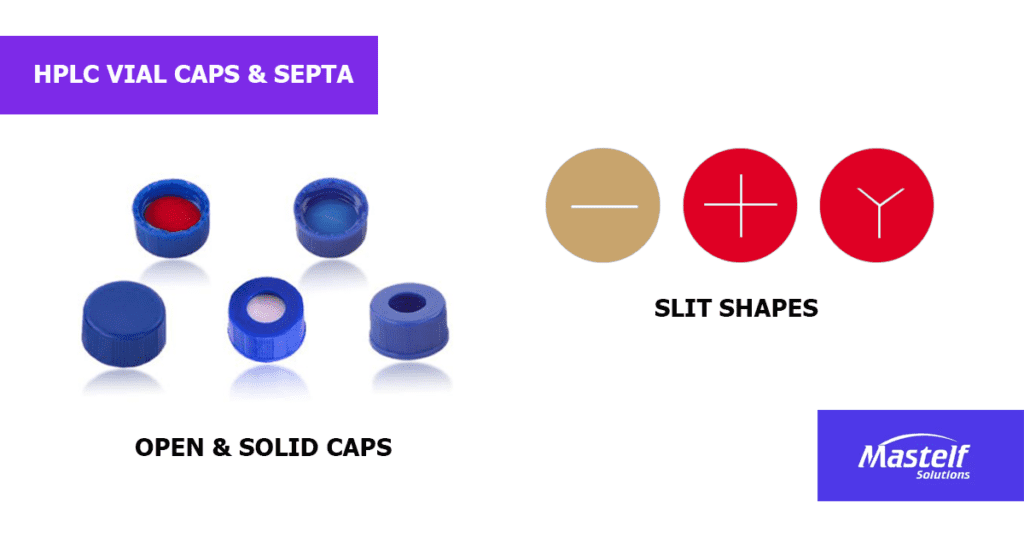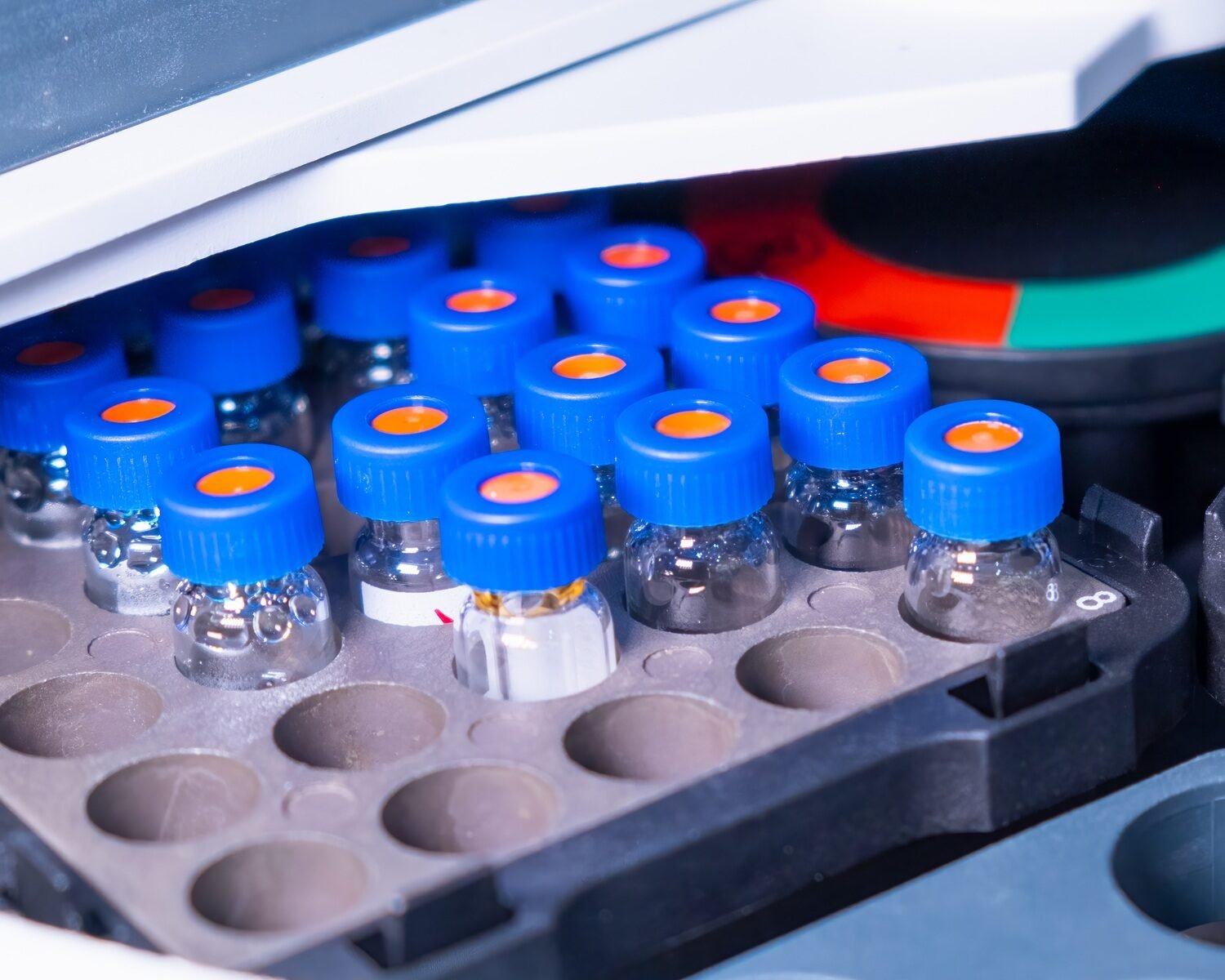HPLC is a straightforward and precise process that requires close attention to details, including what type of vials and other specifications you need to use.
There are various septa variations to choose from, which can be daunting. So, with these many septa on the market, how can you select the best one?
Pre-slit septa have straight cuts on the PTFE/Silicone side or straight cuts on the PTFE side. Moreover, they can have (-), (+), or (Y) shapes. Pre-slit septa make it easy to pierce the sample feeder’s injection in vials and avoid the creation of a vacuum inside the vial. It is helpful for low-volume samples.
This guide will teach you about the wide variety of septa available for HPLC experiments. We will be covering what pre-slit septa is as we go along.
Let’s begin with what pre-slit septa are.
What are pre-slit septa?

Let’s first examine what septa are. The septum commonly we have have two sides, one side can be made of silicone, rubber, viton to play a role of sealing, while the other side is PTFE coated for acid and alkali resistance. As you can see, other septums are not included since it is not the main point of this discussion. However, you can still find the article mentioned below for your reference.
After knowing about septa, let’s see what pre-slit septa are. Septa for chromatography vials can be pre-slit. Pre-slit septs are excellent solutions for chromatography applications that require 20% or more of the sample injection from the vial each time. The purpose is to avoid creating a suction effect.
In addition to that, the slit permits ambient gas to equalize the gas in the vial. It prevents the tight seal surrounding the needle from creating a vacuum. If coring or clogging from a narrow needle, or needle deflection from very durable septum material, a pre-slit septum is a better option.
Aside from permitting gas to equalize, a PTFE/Silicone septum with slits facilitates needle penetration and releases the suction effect that accumulates when a large sample amount is taken from a vial. This type of septa has chromatographic properties similar to a regular non-slit septum. The exception is that its capacity to tolerate exposure to harsh solvents is slightly reduced.
Thus, due to cavitation, pre-slit septa are highly suggested to enhance injection repeatability with autosamplers pulling more than 50µL of sample from a 2mL vial.
Key features
In the same way, some key features of pre-slit septa are that it can be Pre-slit I or +. It can be pre-slit PTFE or Silicone septa. Usually, its diameter measures 8mm to 22mm with a thickness of 1mm, 1.5mm, and 3mm. Most of which are made of either PTFE or silicone material. Again, pre-slit septa in vials aid in piercing easily.
https://www.mastelf.com/product/
Types of vials with pre-slit septa
Now, let’s proceed with some standard vials with pre-slit septa. First is the PTFE/Silicone septa. It has high-quality, pure silicone that is laminated to PTFE. The result is a pure, highly inert septum with excellent resealing characteristics. It is effective even after repeated punctures. PTFE/Silicone/PTFE septa are preferred if good resealability and high purity are required. Of course, it is applicable in most HPLC and GC operations. They work well for applications where ease of needle penetration is essential.
In addition, septa-silica gel has strong repetitive sealability. It can maintain good close performance even after multiple injections in the vial. PTFE is a material with better chemical compatibility. It can withstand strong acids and alkalis. After compounding, the vial can be used for laboratory purposes such as sealed sampling, chemical storage, etc.
Furthermore, a layer of PTFE is laminated to each side of high purity, medium durometer silicone to form a septum that is the most resistant to coring. All the while, it maintains good resealing characteristics. PTFE/Silicone/PTFE septa provide superior performance with any autosampler, especially if a needle has a large diameter and blunt tip.
Specific use cases
Using a vial with pre-slit septa is ideal if a sample of only a minimal volume is getting injected. It can improve injection-to-injection reproducibility. An example is when the autosampler must process more than 50µL of a sample if the vial is just 2mL. Choosing the right septa is as crucial as choosing the right kind of HPLC vial.
Why do vials with septa come in different shapes pre-slit?
The main reason for the slits is the type of needle used for auto sampling. It is acceptable not to use non-slit septa if carryover from vial to vial is not an issue.
Different shapes of pre-slit septa
I want to mention that septa are sealed between vials and caps. Pre-slit processing makes it reasonably easy to puncture the sample feeder’s injection into the HPLC vials during the sampling process. Pre-slit septa are perfect for automatic sampling. Despite the slit, Septa can keep the sample seal in the HPLC vial without causing the creation of a vacuum in the air pressure inside the HPLC vial. That is necessary when sampling for the auto-injection needle.
There are two types of pre-slit septa, single slit and cross slit. Such a slit can correctly direct the injection needle punctured septa into the HPLC vials without a thin automatic injection breaking or the cushion falling off into the contaminated sample in the HPLC Vial.
Compared to just a single slit, a double or Y-shaped slit gives more target area for the needle penetration, preventing downtime in operation just because of a problem in the needle.
If the accuracy of the autosampler needle is not a problem, single-slit septa will work just fine.
Conclusion
Pre-slit septa is commonly used for GC application to prevent vacuum.
Mastelf offers both non-slit and pre-slit septa vials for your laboratory needs. Get free samples today upon consultation.










